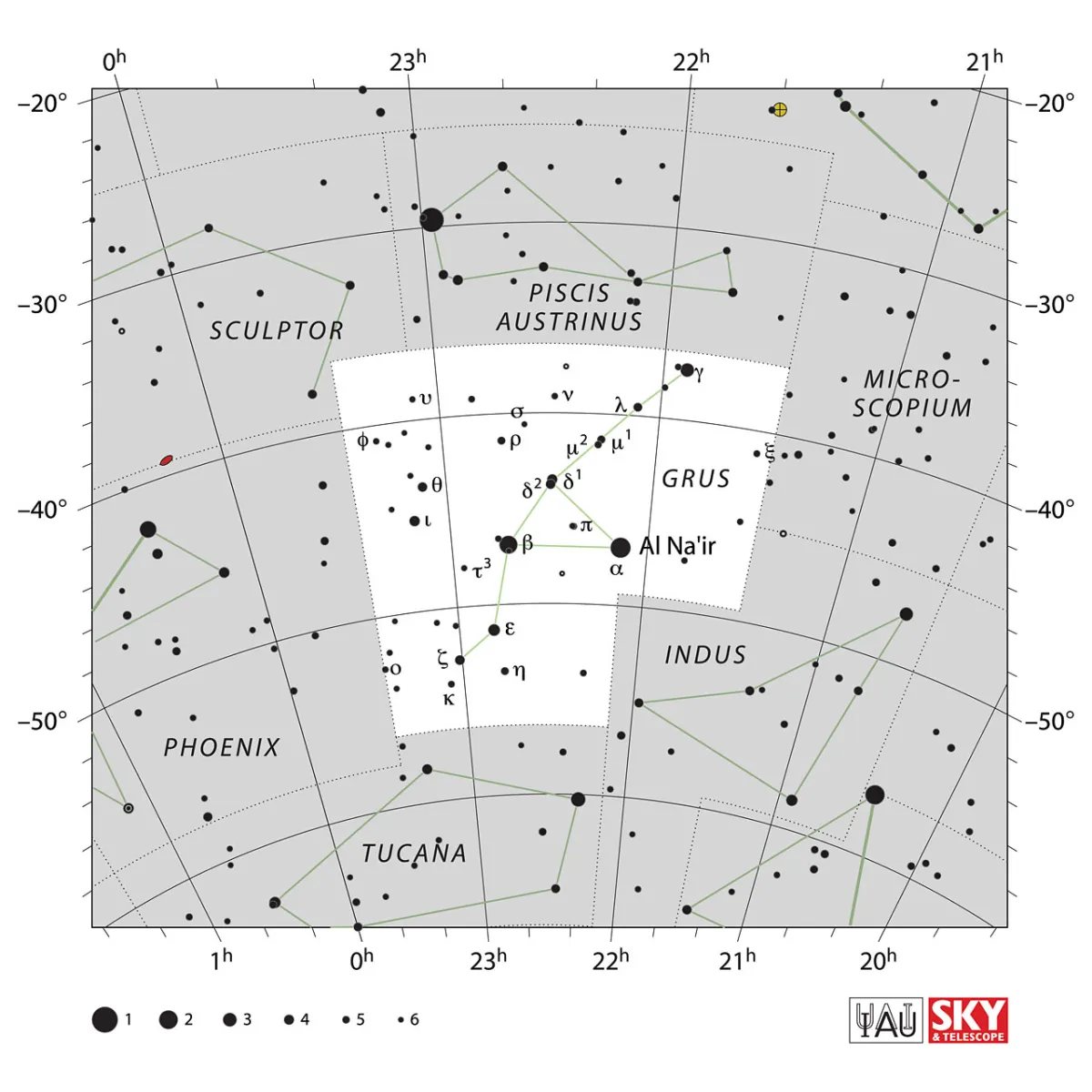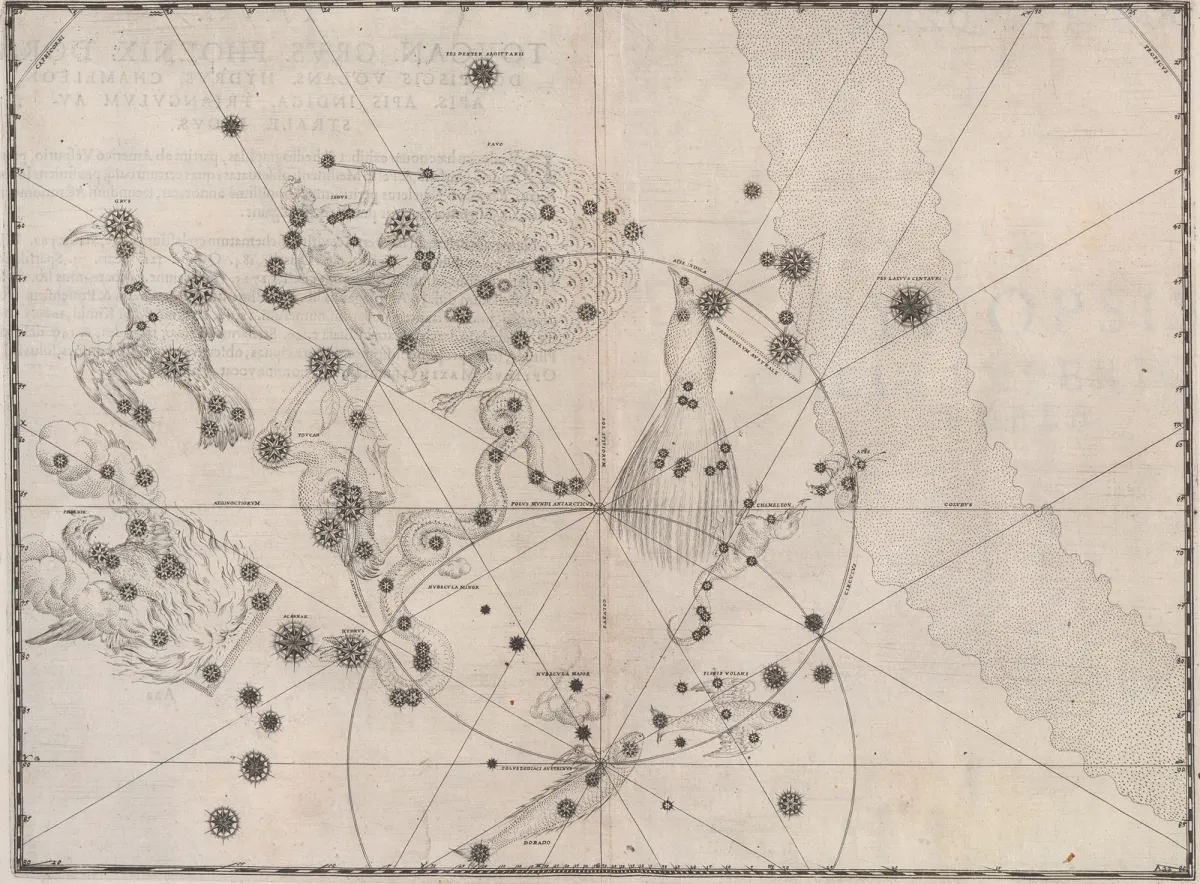Constellation Grus (Crane)

Properties
The constellation is south of Piscis Austrinus. Only the northern parts of the constellation can be observed from Central Europe. The most striking feature is a curved star line which is concave to the star Al Nair (α Gruis). The area of the constellation is 366 square and the centre culminates around midnight on August 29th. The northernmost part then makes it into Central Europe just above the southern horizon. [9, 15]
| α Gru | Alnair, Al Nair |
| IAU Name | Grus |
| IAU Genitive | Gruis |
| IAU Abbr. | Gru |
| English Name | Crane |
| Culmination at local midnight | 29 August |
| Season (Latitude +0.0°) | May … January |
| Right Ascension (J2000.0) | 21h 27m 43s … 23h 27m 04s |
| Declination (J2000.0) | -56° 23' 27" … -36° 18' 46" |
| Area | 366 deg2 |
| Neighbours (N↻) | PsA, Mic, Ind, Tuc, Phe, Scl |
Deep-Sky Object Descriptions
Catalogues

History
The constellation was introduced in 1603 by Johann Bayer in his Uranometria. It represents a water bird, usually a crane, but is also seen by some as a flamingo. [7]